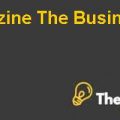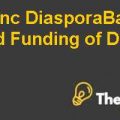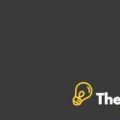Curtis Swann Case Study Solution
Analysis
According to the data given in the case and with the help of relevant assumptions, would enable the management to determine the production cost of 5 x 7 cards with respect of different batch sizes. In which, initial design cost and die purchase cost was taken as a capital expenditure, which would not be added to the total cost of production. Furthermore, the cost of sheet, color separation cost, Stripping/printing cost, embossing cost and overhead, which added to the total production. As it was assumed that, these overhead expenses would be incurring due to the production of 5 x 7 card sizes. Which, in turn, enabled to determine the production cost per batch and the production cost per unit. In which, it can be assessed that, as the batch size increased the cost of production per batch deceased, attributed to the same overhead that would be charged irrespective of any batch size produced.
Furthermore, the annual sale demand were estimated form the data provided in the case. In which, it was given that, 20% of the products would be sold between 65,000 to 85,000 and 60% of the products would be sold between 35,000 to 40,000. Whereas, the remaining 20% would account for 5000 units. Therefore, an average was taken of each of these sales categories to estimate the total sales demand amount to 117,500 annual.Similarly, dividing the sales demand by the amount of production batch, helped to determine the number of batches that would be produced under each batch.
| Sales Forecast Curtis Swann | |||||||
| Production Runs | 5,000 | 10,000 | 15,000 | 20,000 | 25,000 | 30,000 | |
| Sales Forecast | Percentage | Units produced | |||||
| Good units sales | 20% | 75,000 | |||||
| Average Unit Sales | 60% | 37,500 | |||||
| Other units sales | 20% | 5,000 | |||||
| Total | 100% | 117,500 | |||||
| No. of Batches Produced | 23.50 | 11.75 | 7.83 | 5.88 | 4.70 | 3.92 | |
Moreover, it was given in the case that, the company would attain financing from bank, amounting to 50% of its inventory held and 80% of its account receivable. In which, it was assumed that, the company used both factor to attain loan form the bank and its annual sales of 117,500 units at $2.00 per unit sold to retailers would be the amount of A/c receivable. Which would amount to $1,157,500 with a prime interest at the rate of 10.5% amounting to $121,538, which would make the total worth of the financing amount to $1,279,038.
| Particulars | Annual | |
| Sales Revenues | $ 221,875 | |
| Inventory Cost | $ 1,250,000 | |
| A/c Receivable for 3-years | $ 665,625 | |
| Loan Borrowed | $ 1,157,500 | |
| Prime rate | 10.50% | |
| Prime cost on loan | $ 121,538 | |
| Total Loan Financed Worth |
$ 1,279,038 |
Curtis Swann Harvard Case Solution & Analysis
After analyzing the case, it can be determined that, as the batch increases the cost of production per batch decreases. Which could be attributed to same overhead incurred on different batch sizes. Furthermore, the embossing cost, which would remain steady between 5,000 and 7,500 at $2,485, 7500 and 10,000 at $2,898, 10,000 and 12,500 at $3,210 respectively. Furthermore, the cost of embossing would remain constant from 12,500 batch size on wards at $3,624. Therefore, it can be determined that, the company should produce large batch sizes, which would decrease its cost of production. Similarly, it could use economic batch quantity 5,497, calculated under certain assumptions and using the data provided in the case, which are illustrated in the Excel exhibit..................
This is just a sample partial case solution. Please place the order on the website to order your own originally done case solution.











